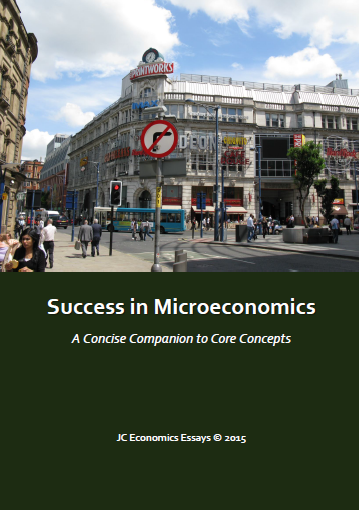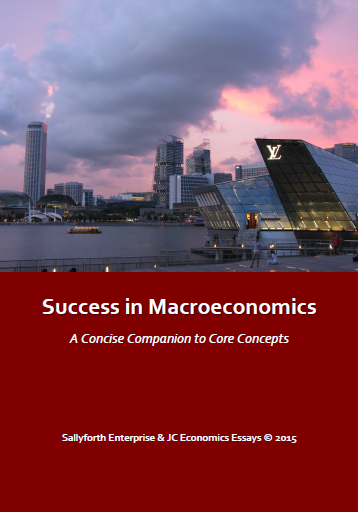Discuss the advantages and disadvantages of
Electronic Road United
Kingdom
This
paper discusses the economic advantages and disadvantages of Electronic Road
Pricing (ERP) in the United Kingdom
(the UK ).
First, a few definitions are in order: what is ERP? ERP is the idea of congestion charges,
where a charge is imposed on cars that drive within a restricted zone during
certain times of the day. This paper discusses the economic advantages and
disadvantages of ERP in the United
Kingdom ’s context.
Advantages of Electronic Road Pricing in
the UK
First,
ERP raises revenue for the UK
government effectively, because the demand for road trips is relatively
inelastic, especially during peak hours during the day. According to economic
theory, relatively inelastic demand suggests that when prices are raised,
revenue will increase, ceteris paribus. If
the UK government gets more
tax revenue, other taxes can be decreased, the government can spend more on
public transport, or the budget deficit in the UK can be reduced. Hence, this method
of raising revenue can be considered a major advantage.
Second,
ERP can increase social efficiency. In a free market, the consumption of car
trips is heavily over-consumed. This is because when people are driving, they ignore
the negative externalities of congestion and pollution, and only consider their
own marginal private costs and benefits. Externalities are third party spill-over
effects, and can be negative or positive. In the case of cars, they produce
many negative externalities to other people who are not involved in the use of
private cars. The marginal social cost of driving is thus much greater than the
marginal private cost of driving.
In fact, empirically, congestion costs the UK economy billions
every single year in lost output and wasted time. Pollution from cars is also a
significant contributor to carbon dioxide emissions in the UK . Road charging should encourage
people to look for other forms of transport which do not pollute as much. Therefore
it makes sense for the government to charge a much higher price of driving in
congested areas because this will make drivers internalise the externality.
Disadvantages of Electronic Road Pricing in
the UK
On
the other hand, there are of course certain disadvantages of ERP in the UK . First, it
seems to be an intrusion on liberty. To drive one will need countless documents
or be monitored by technology. The driver’s movements on the roads and
whereabouts might be tracked, which could affect his freedom.
However,
this point does not seem rather strong because most times when consumers use
electricity or Internet access, their movements and usage are tracked as well,
and hence this cannot be considered an infringement of liberty.
Secondly,
the government seems to be just using ERP to raise money, which may not be
politically acceptable. There could be the perception that this idea does not
tackle negative externalities, but is instead a new method of raising revenue
from the people.
However,
that is indeed one of the reasons for the existence of income tax, Value Added
Tax, and every other type of tax. Raising money from a new tax enables other
taxes to be lowered or spending to be increased, and therefore this need not necessarily
be negative.
Thirdly,
ERP increases inequality in the UK .
This is true to an extent. This is because a road pricing charge is a higher
percentage of a tax for those with low incomes, relative to those with higher
incomes, and as such impacts the poor more than the rich who can easily afford
to drive, even with congestion charges.
However,
buying a car and paying for petrol also affects inequality in the UK . If concern
about the equality of income distribution is an issue, the government can alter
other taxes and benefits, by taxing differently and redistributing the proceeds.
A tax which increases efficiency – in this case solving the market failure of
negative externalities – need not be stopped on equity grounds. It is always
possible to compensate the effects to others by different redistributions of
income, which is outside this paper’s arguments.
Conclusions
In
conclusion, ERP clearly has both advantages and disadvantages for the UK government.
First, ERP raises revenue for the UK government effectively, because
the demand for road trips is relatively inelastic, especially during peak hours
during the day. Second, ERP can increase social efficiency and force drivers to
internalise their externalities, thus solving a market failure. On the other
hand, there are of course certain disadvantages of ERP in the UK . First, it
seems to be an intrusion on liberty. Secondly, there could be the perception
that this idea does not tackle negative externalities, but is instead a new
method of raising revenue from the people. Thirdly, ERP increases inequality in
the UK
by impacting the poor more than the rich.
In
the final analysis, however, given that the core economic issue here seems to
be the market failure of negative externalities affecting the socially
efficient level of output, then ERP is indeed a good method of solving a particular
market failure in the UK ,
and all other considerations seem to be secondary rather than primary to the
core issue.
JC Economics Essays: Tutor's Commentary - As promised, this site offers more than just topics of interest to Singapore, but also other countries and international events, situations, and much more material. Hopefully this will help you in your Economics revision, and at any rate you can get to learn more about other countries and their economies, or their economic situation, and see how general Economics concepts can be applied to different countries' contexts, and the international context as well. Observe that from a student's viewpoint (as well as an Economics tutor's viewpoint), solving congestion utilises general economic principles that apply not just to Singapore, but to other countries' contexts as well. In other words, always think of how you can APPLY Economics to DIFFERENT contexts, topics, and subjects. As usual, the usual tutor's comments apply: think of what the relevant diagrams should be; how would you improve on this answer, and how can you approach this Economics question other than using this approach? Thanks for reading, and cheers! (Acknowledgement: This Economics essay was written by a student who worked with me.)



